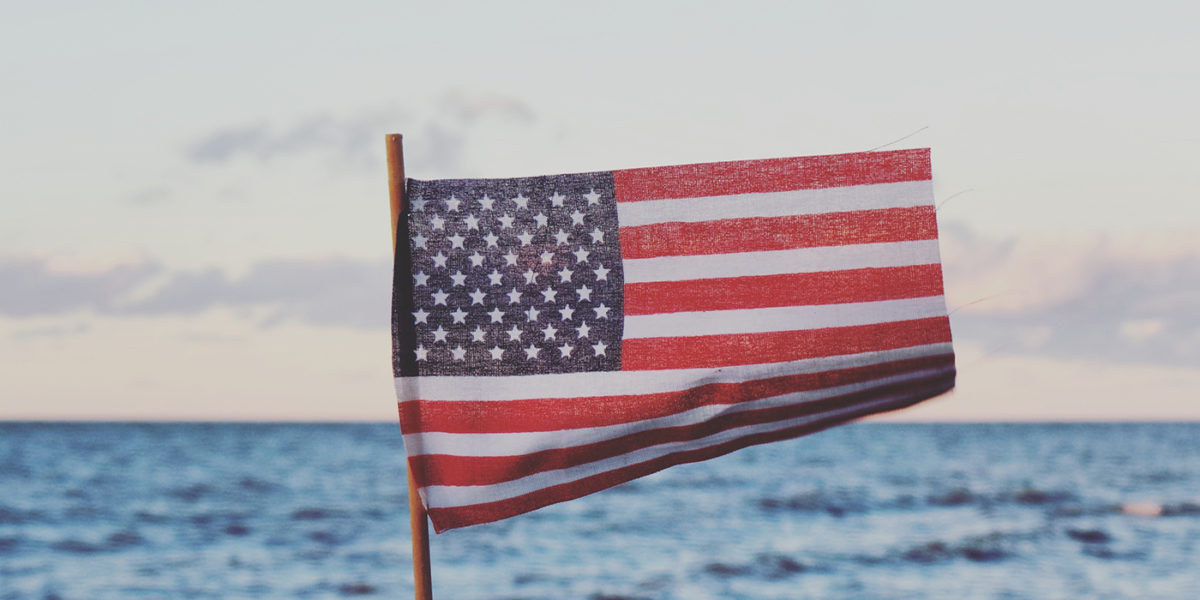In a memo to President Trump, Secretary of the Interior Ryan Zinke has proposed shrinking six of our national monuments, and making management changes for four national monuments. Three of the affected national monuments protect critical areas in US waters. These are ocean places that belong to all Americans and are held in the hands of our federal government as a public trust so that common spaces and common resources are protected for all, and for future generations. For decades, US Presidents from both parties have declared national monuments on behalf of all Americans and never before has one President considered overturning the designations made by prior administrations.
Earlier this year, Secretary Zinke announced that certain monuments from recent decades would undergo an unprecedented review, complete with public comment periods. And boy did the public respond—thousands of comments poured in, most of them recognizing the incredible legacy of land and sea that earlier Presidents had protected.
For example, President George W. Bush designated the northwest Hawaiian Islands as part of a marine national monument called Papahānaumokuākea in 2009. In 2014, based on expert recommendations and consultation with key stakeholders, this Hawaiian monument was enlarged by President Obama in 2014. For both Presidents, a priority was limiting commercial fishing within the monuments—to protect key habitats and provide a refuge for all wild creatures of the sea.
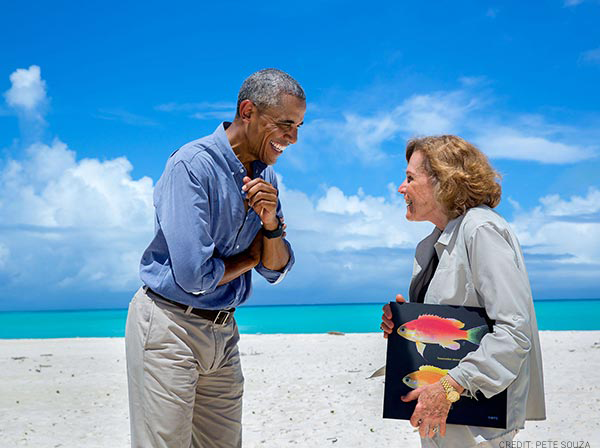
President Barack Obama and oceanographer Dr. Sylvia Earle at Midway Atol
Papahānaumokuākea is a sanctuary for many species, including endangered species such as blue whales, short-tailed albatrosses, sea turtles, and the last Hawaiian monk seals. The monument is home to some of the world’s northernmost and healthiest coral reefs, considered among the most likely to survive in warming ocean waters. The seamounts and sunken islands of its deeper waters are inhabited by more than 7,000 species, including the oldest animals on Earth—black corals that have lived for more than 4,000 years. According to National Geographic, “In all, a quarter of the creatures living in the monument are found nowhere else. Many more have not yet been identified—such as a ghostly little white octopus, recently discovered, that scientists have dubbed Casper.”
In order to ensure that these special creatures (and the reef and other systems where they live) would not be accidentally harmed by commercial fishing and other extractive activities, a negotiated agreement allowed for fishermen from Kauai and Niihau to continue to use their traditional fishing grounds inside the Exclusive Economic Zone, but be barred from other vulnerable areas. Yet, for the northwest Hawaiian Islands monument (Papahānaumokuākea), Secretary Zinke has recommended re-opening the space to commercial fishing and reducing its size by changing its boundaries.
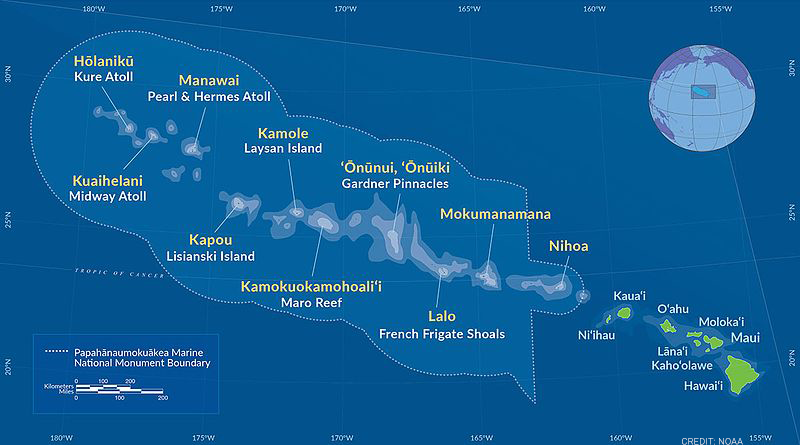
Another monument that Secretary Zinke recommended for reduced protection is an area of American Samoa called the Rose Atoll, which was also created by President Bush in early 2009. Approximately 10,156 square nautical miles of marine ecosystem at Rose Atoll were protected as one of four Marine National Monuments spanning across the Pacific that protects diverse marine ecosystems and the millions of wildlife dependent upon the Central Pacific, according to the US Fish & Wildlife Service. In this case, President Trump’s Secretary of the Interior is recommending shrinking the boundaries of this monument, and again allowing commercial fishing to take place.
Third, the Northeast Canyons and Seamounts Marine National Monument was created by President Obama in 2016 following years of consultation with experts of all kinds. The area covered by the new monument, which ends at the edge of the exclusive economic zone, 200 miles from land, is known for a striking abundance of species and pristine habitats across a wide range of temperatures and depths. Endangered North Atlantic sperm whales forage near the surface. The canyons are studded with branching bamboo corals as big as jungle gyms.
One part of this monument runs along the edge of the continental shelf, to protect three huge canyons. The canyon walls are covered with deep-water corals, anemones, and sponges that “look like a walk through Dr. Seuss’s garden,” said Peter Auster, senior research scientist at the Mystic Aquarium and research professor emeritus at the University of Connecticut.
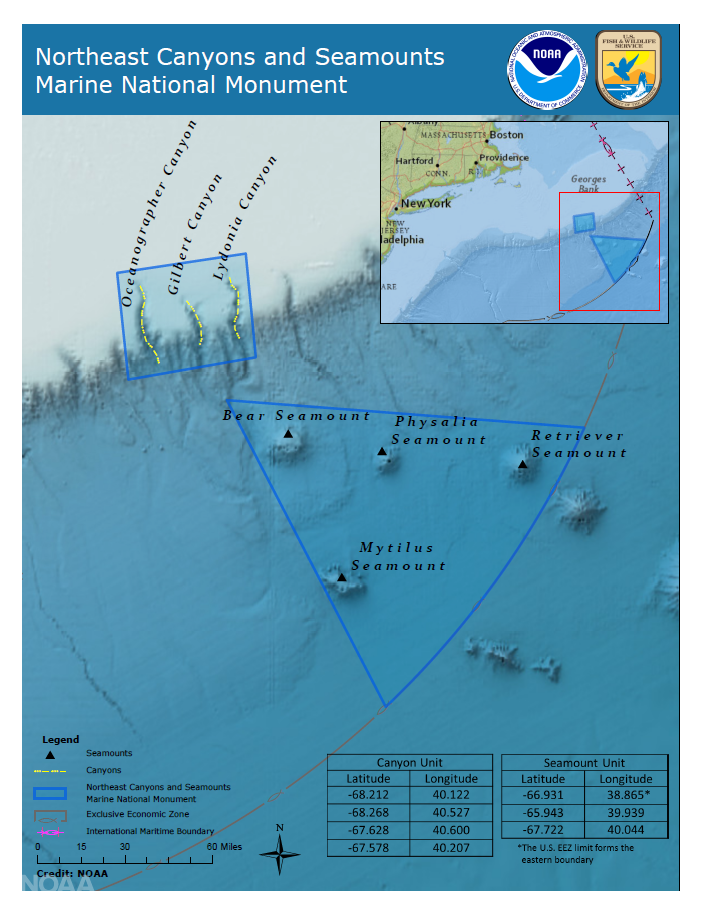
The Bear, Retriever, Physalia, and Mytilus are the four seamounts that are protected south of the continental shelf, where the seafloor plunges into the abyss. Rising more than 7,000 feet from the ocean floor, they are ancient volcanoes formed a hundred million years ago by the same hot plumes of magma that created New Hampshire’s White Mountains.
President Obama made an exception for commercial red crab and American lobster fisheries within this monument, and Secretary Zinke wishes to open it in its entirety to all types of commercial fishing.
The proposed changes to national monuments that have been suggested by the Secretary will be aggressively challenged in court as a violation of law and policy regarding presidential prerogatives and power. They will also be challenged extensively for violating substantial public will expressed through the public comment processes at the time of their designations and in the Zinke review. We can only hope that the protections, for these relatively small areas of our total national waters can be maintained by applying the rule of law.
For years, the conservation community has been leading an effort to identify and set aside a modest percentage of our national ocean waters as protected areas, only some of which exclude commercial fishing. We see this as necessary, pragmatic, and precautionary. It is consistent with worldwide goals, to assure sustainable ocean life now and for future generations.
As such, Secretary Zinke’s recommendations are out of sync with the American public’s deep understanding of the value of protecting lands and waters for future generations. The American public understands that changing these designations will undermine the ability of the United States to meet food security goals for future generations by taking away protections that are intended to restore and increase productivity for commercial fisheries, artisanal fisheries, and subsistence fisheries.
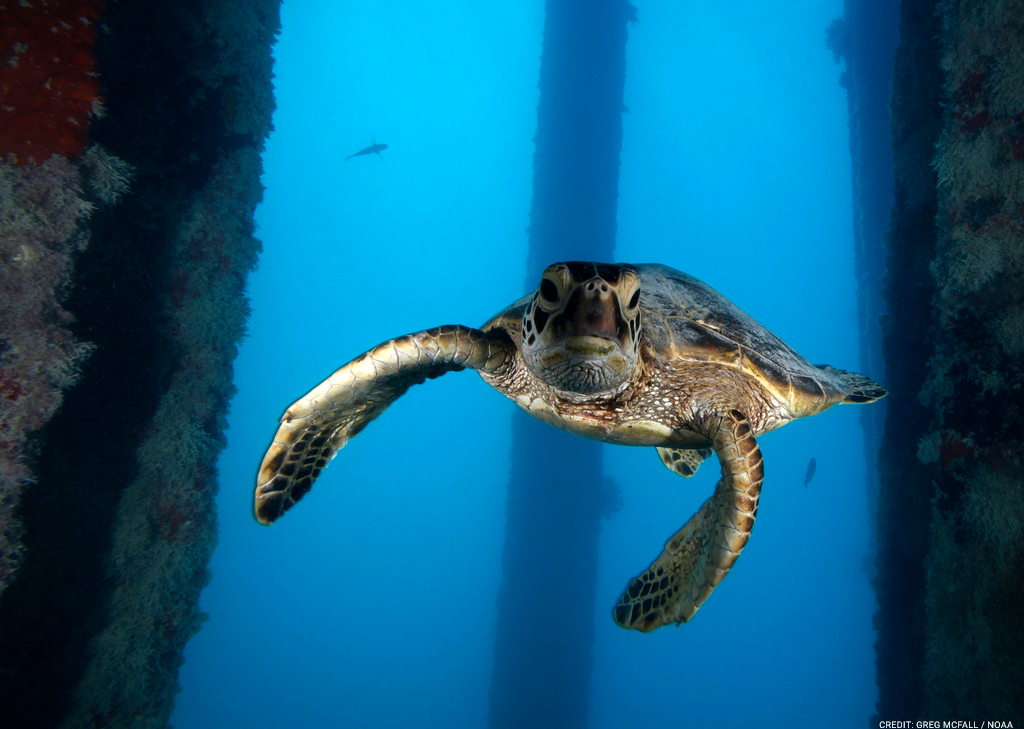
Juvenile green sea turtle underneath the Midway Island Pier in the Papahānaumokuākea Marine National Monument.
The Ocean Foundation has long believed that defending the health of the ocean and its creatures is a non-partisan, global priority. The development of a management plan for each of these monuments is not wholly complete, and allows for considerable public input within the parameters of the designating President’s proclamation. It is not as though every President from Theodore Roosevelt to Barack Obama who created a monument woke up one morning and arbitrarily decided to do so over breakfast. Like their predecessors, President Bush and President Obama both undertook considerable due diligence before making these designations. Thousands of people have let Secretary Zinke know how important the national monuments are to them.
TOF Board of Advisors member Dr. Sylvia Earle was featured in the September 18 Time magazine for her leadership on ocean science and ocean protection. She has said that we must fully protect large parts of the ocean in order to support the ocean’s continued life-giving role.
We know that everyone who cares about the ocean and its health understands that we must set aside special places for the protection of ocean life, and to permit those regions to adapt to changing ocean chemistry, temperature, and depth with minimal interference from human activity. Everyone who cares should also be contacting our nation’s leadership at every level to defend the national monuments as they were created. Our past Presidents deserve to have their legacy defended—and our grandchildren will benefit from their foresight and wisdom in defending our shared public resources.
